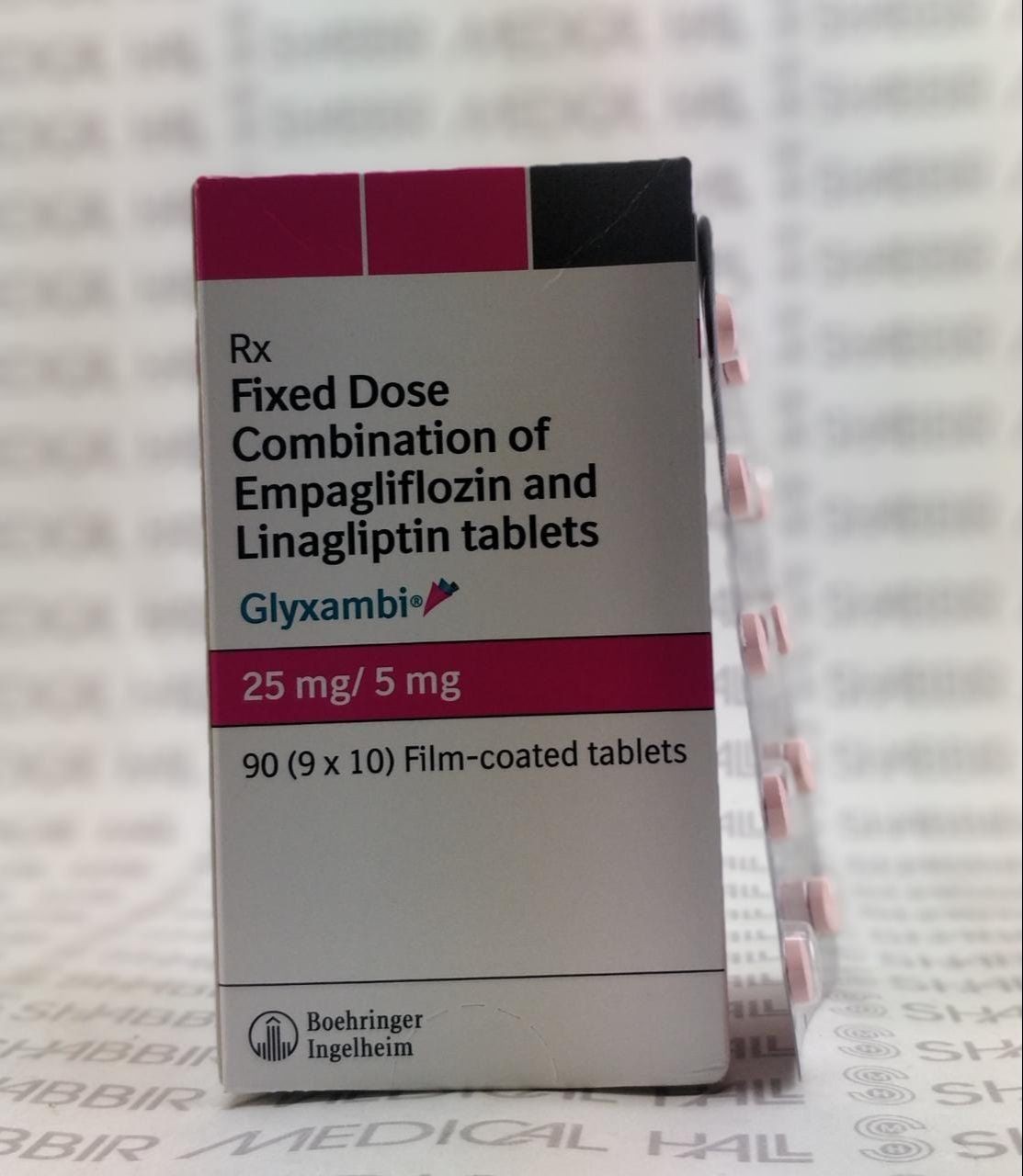
Contents
Glyxambi (empagliflozin and linagliptin)
Glyxambi is a prescription medicine that combines two diabetes medications, empagliflozin (Jardiance) and linagliptin (Tradjenta). It can be used to lower blood sugar in adults with type 2 diabetes, including those with known cardiovascular disease who require empagliflozin to reduce the risk of cardiovascular death.
However, Glyxambi is not suitable for people with type 1 diabetes or diabetic ketoacidosis. If you have a history of pancreatitis, it is unclear if taking Glyxambi increases the risk of developing it again. Additionally, the safety and effectiveness of Glyxambi in children under 18 years old is unknown.
What are the side effects of Glyxambi?
Glyxambi can cause serious side effects, such as:
- Inflammation of the pancreas (pancreatitis), which can be severe and fatal. Certain factors, like a history of pancreatitis, alcoholism, gallstones, or high blood triglyceride levels, may increase the risk. Seek immediate medical attention if you experience severe and persistent abdominal pain, which may radiate to the back, and possibly accompanied by vomiting. These symptoms may indicate pancreatitis.
- Heart failure, characterized by insufficient pumping of blood by the heart. Make sure to inform your doctor if you have a history of heart failure or kidney problems. Seek medical help if you experience increasing shortness of breath, swelling or fluid retention (particularly in the feet, ankles, or legs), sudden weight gain, or unusual fatigue.
- Infections in the genital area, such as unusual vaginal odor, discharge, itching, or redness in women, or redness, rash, discharge, or pain in the penis for men.
If you develop symptoms of a yeast infection in the vaginal or penile area, consult your doctor. Do not hesitate to ask your doctor if over-the-counter antifungal medications are suitable for you.
QUESTION
What is the dosage for Glyxambi?
Prior To Initiation Of Glyxambi
- Assess your kidney function and volume status before starting Glyxambi if necessary.
- If you have volume depletion, it should be corrected before starting Glyxambi.
Recommended Dosage
The typical initial dose of Glyxambi is 10 mg empagliflozin/5 mg linagliptin once daily in the morning, with or without food. For additional blood sugar control, your doctor may increase the dose to 25 mg empagliflozin/5 mg linagliptin once daily.
Dosage Recommendations In Patients With Renal Impairment
- Glyxambi is not recommended for patients with an estimated glomerular filtration rate (eGFR) below 30 mL/min/1.73 m² and is contraindicated in those on dialysis.
What drugs interact with Glyxambi?
Clinically Relevant Interactions with Glyxambi:
| Diuretics | |
| Clinical Impact | Taking empagliflozin with diuretics can increase urine volume and frequency. This may lead to a higher risk of volume depletion. Before starting Glyxambi, assess your volume status and kidney function. Correct any volume depletion before initiating therapy. Monitor for signs of volume depletion and renal function after starting treatment. |
| Insulin or Insulin Secretagogues | |
| Clinical Impact | When combined with an insulin secretagogue (e.g., sulfonylurea) or insulin, empagliflozin or linagliptin may increase the risk of hypoglycemia compared to placebo. Lower doses of the insulin secretagogue or insulin may be needed when used concomitantly with Glyxambi to reduce the risk of hypoglycemia. |
| Positive Urine Glucose Test | |
| Clinical Impact | SGLT2 inhibitors like Glyxambi increase urinary glucose excretion, leading to positive urine glucose tests. |
| Interference with 1,5-anhydroglucitol (1,5-AG) Assay | |
| Clinical Impact | SGLT2 inhibitors like Glyxambi can affect the accuracy of using 1,5-AG measurements to assess glycemic control. |
| Inducers of P-glycoprotein or CYP3A4 Enzymes | |
| Clinical Impact | The administration of rifampin, a strong P-gp or CYP3A4 inducer, can reduce the exposure to linagliptin, potentially reducing its effectiveness. Therefore, it is strongly recommended to use alternative treatments when co-administering linagliptin with strong P-gp or CYP3A4 inducers. |
Is Glyxambi safe to use while pregnant or breastfeeding?
- Based on animal studies showing adverse renal effects of empagliflozin, Glyxambi is not recommended during the second and third trimesters of pregnancy.
- There is limited data to determine the association between Glyxambi, linagliptin, or empagliflozin and major birth defects or miscarriages in pregnant women.
- Avoiding poorly controlled diabetes during pregnancy is crucial for the health of both mother and baby.
- The presence and effects of Glyxambi or its individual components in human milk, as well as their impact on infants or milk production, are unknown. However, rat studies have shown that both empagliflozin and linagliptin are present in rat milk. Thus, it may pose risks to the developing human kidney, as fetal kidney maturation occurs during pregnancy and the first two years of life, while lactational exposure may occur.
- Due to potential serious adverse effects on breastfed infants, including possible effects on postnatal renal development, Glyxambi is not recommended while breastfeeding.
Summary
Glyxambi is a prescription medication that combines empagliflozin and linagliptin to treat type 2 diabetes. It can effectively lower blood sugar levels, but it is crucial to be aware of its potential side effects, including pancreatitis, heart failure, and genital infections. Assess your medical history and consult with your healthcare provider to determine if Glyxambi is the right treatment option for you.


